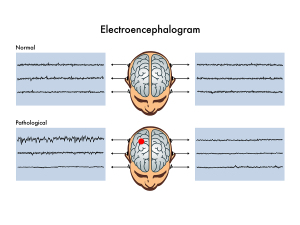Diagnostic tests for epilepsy help to rule out any known causes of epilepsy. As mentioned above only about 50% of cases of epilepsy have an identifiable cause; they are called “secondary epilepsy”.
The physician or neurologist would concentrate on attempting to identify first whether or not any of such causes could be determined. While the tests are ongoing, the patient’s epileptic seizures are already being controlled by an anti-epileptic medication.
It is important to have a good eye witness account of on of the epileptic seizures as this will help the physician to determine whether this was a focal (more limited) seizure or whether this was a generalized seizure. Also a family history of epileptic seizures is important to know as this will make it more likely that there is a genetic reason for this”idiopathic epilepsy”.
The differential diagnosis for a focal seizure would include such diverse items as a brain tumor, a scar from prior trauma, a stroke or a blood vessels malformation. A stiff neck and a fever associated with a seizure might point to the possibility of meningitis, encephalitis or subarachnoid hemorrhage.
The doctor may want to do a lumbar puncture (a needle test of the cerebrospinal fluid space in the lower back). This would tell the physician, which of the just mentioned possibilities it would be when the fluid is sent right away to the laboratory for analysis. The main test for epilepsy is and electroencephalogram (EEG). Here is a link to a site that explains more about EEGs (thanks to epilepsy.about.com for this link).
Unfortunately in about 30% of patients with true epilepsy this test is normal, as the brain activity might have normalized by the time the EEG test is done.
In these cases a second EEG is performed, possibly during sleep deprivation as sleep deprivation brings out abnormal electrical brain wave activity in patients who are epileptic.
However, only half of the patients that were missed on the first EEG will show abnormalities. In about 10 to 15% of patients despite repeat EEG’s the tests may be normal. In such patients the clinician may have to diagnose the epileptic condition by clinical experience alone. Other tests that might be useful are an MRI scan or CT scan for stroke patients or for congenital abnormalities. Other newer imaging techniques such as PET scanning and SPECT scanning can give the neurologist valuable information, particularly in temporal lobe seizures, some of which may need neurosurgery.
Here is a link to a site that shows a review of these imaging techniques (thanks to www.imaginis.com for this link).
Blood tests that are useful are: Blood sugar tests, electrolytes (sodium, magnesium and calcium), possibly a drug screen. With infection a lumbar puncture as mentioned above would be indicated. In the following I am describing in some detail the various epilepsy forms with the usual treatment. As there are some differences between childhood and adult epilepsy I decided to deal with them separately.
References:
1. F Zara et al. Am J Hum Gen 2000 May 66(5): 1552-1557.
2. S Yeung et al. Europ J Paediatr Neurol 2000; 4(1): 31-33.
3. LS Leung et al. Neurosci Biobehav Rev 2000 Sep 24(7): 763-775.
4. DJ Yen et al. Epilepsia 2000 Sep 41(9) 1162-1166.
5. E Starreveld et al. Can Fam Physician 2000 Sep 46: 1817-1823.
6. The Merck Manual, 7th edition, by M. H. Beers et al., Whitehouse Station, N.J., 1999. Chapter 172.
7. The Merck Manual, 7th edition, by M. H. Beers et al., Whitehouse Station, N.J., 1999. Chapter 271, p.2415.
8. Ferri: Ferri’s Clinical Advisor: Instant Diagnosis and Treatment, 2004 ed., Copyright © 2004 Mosby, Inc.
9. Rakel: Conn’s Current Therapy 2004, 56th ed., Copyright © 2004 Elsevier







